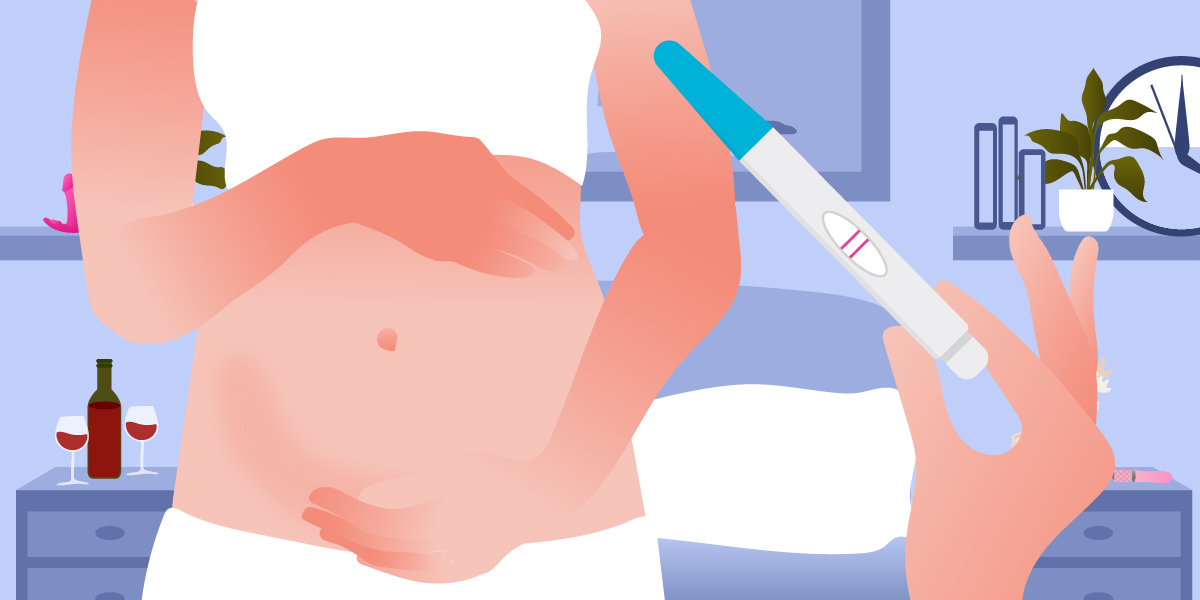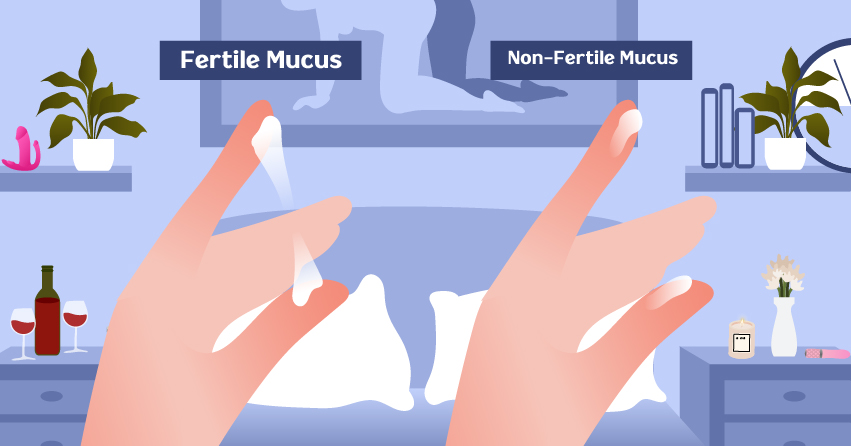
This natural family planning article is meant to be a source of valuable information for the reader; however, it is not a substitute for direct expert assistance. Seek help from a healthcare professional with expertise in fertility awareness-based methods for further information.
Condoms. Implants. Patches. Injectables. Pills. IUD. Thanks to the advancements in the sexual health space, tons of birth control medications and devices can guarantee protection against unintended pregnancies.
However, these contraceptives come with a wide array of side effects, such as mood swings, hormonal acne, weight gain, spotting, and the like. Studies also show that hormonal birth control can increase the risk of breast cancer.
This is why some couples are exploring natural family planning methods, as they offer a contemporary, holistic, and non-invasive approach. But like hormonal contraceptives, they also come with their own set of disadvantages.
For this guide, we’ll explore the different natural family planning methods, their proven effectiveness, their benefits, and essential considerations that couples must consider.
What is Natural Family Planning?

Natural Family Planning is a form of birth control that doesn’t involve devices and medications. Known as fertility awareness-based methods, it focuses on how your body works; it uses your menstrual cycle, cervical mucus, body temperature, and other factors to determine your fertile days. You may use a journal, a period tracking app, or other items to jot down your observations.
If you’re trying to get pregnant, natural family planning can help you pinpoint the perfect time to engage in intercourse. On the other hand, it can also help you figure out the days to avoid sexual activities to prevent pregnancy.
Types
Natural family planning comes in different types, with distinct instructions and calculations. We recommend learning these methods first and figuring out which would work for you and your partner. You can also consult your healthcare provider, as they are more knowledgeable about your medical history and current conditions.
1Rhythm Method

The Rhythm Method, also known as the Calendar Method, is the most common and straightforward technique in natural family planning. It predicts a woman’s fertile and non-fertile days based on the length of her menstrual cycles over several months.
How to Do It
Track your menstrual cycle. Using a calendar or notepad, write down the number of days in your menstrual cycle. You should start the count from the first day of your period up to the first day of your next period. Do this for at least 6 months.
Once you’re done jotting down, check which month has the shortest cycle and how long it is. Take note of that. Then, subtract 18 from the total number of days that cycle. For instance, your shortest cycle is 25 days long. 25 minus 18 is 7. This means the seventh day of your cycle is your first fertile day. Note that this doesn’t mean the 7th day of the calendar is your first fertile day— it’s the 7th day of your cycle, which begins once you’ve got your period.
Next, you’ll need to determine the last fertile day. For this one, you’ll need to get back on the notebook or calendar and then check which month has the longest cycle. Once you’ve checked that up, you will subtract 11 from the total number of days in that cycle. For example, if your longest cycle is 31 days long. 31 minus 11 is 20, which means the 20th day of your cycle is your last fertile day. Overall, your fertile days start from the 7th to the 20th day.
Once you’ve determined your fertile days, you can either avoid sex or have frequent sex during that period, depending on your goal. Wanna conceive? Spend more time in the bedroom. Don’t wanna get pregnant? Abstain.
Make sure to continue jotting down your cycles and calculating your fertile days. Stress, medications, and other factors can affect the length of your menstrual cycles, affecting the schedule of your fertile days. Use period tracking apps to calculate and jot down your cycles easily.
2Cervical Mucus or Ovulation Method

If you want a simpler approach, consider this technique. For this one, you’ll need to observe your cervical mucus, the fluids produced in your cervix.
How to Do It
Use your clean finger to gently collect fluids from your vagina, then jot down the color and consistency of the said fluid in your notebook. Do this daily for a couple of months.
After jotting down what your cervical mucus looks like for a couple months, notice the days when your discharge is clear and stretchy. Those are your most fertile days. On the other hand, you’ll have fewer chances of getting pregnant on days that you have creamy or zero discharge.
This method can be effective only if you consistently track down your cervical mucus. If you’re doing it before and after sex, the readings may not be as accurate. You also need to consider the medications you’ve taken and if you have conditions that disrupt regular ovulation, such as polycystic ovary syndrome. In that case, please consult your healthcare provider first before trying this one.
3Basal Body Temperature Method (BBT)

For this one, you’ll need to check your basal body temperature, the body’s lowest temperature at rest. Throughout the menstrual cycle, the body’s basal body temperature fluctuates in response to changes in hormonal levels, particularly the rise in estrogen just before ovulation and the subsequent increase in progesterone after ovulation.
How to Do It
You first need to get a special basal thermometer; it should show two decimal places. For instance, it should show 36.33 degrees Celsius instead of 36.3 degrees Celsius. Second, prep some notebook or device to jot down your temperature.
Once you wake up in the morning, measure your basal body temperature using the special thermometer. To get accurate readings, measuring the temperature simultaneously every morning is crucial, preferably after at least 3 to 4 hours of uninterrupted sleep. Start tracking right on the first day of your period, then continuously do it until your third menstrual cycle.
You must interpret the data once you’ve jotted down your daily basal body temperature.
- In the first part of the menstrual cycle, the woman’s basal body temperature tends to be relatively stable and lower before ovulation.
- Just before ovulation occurs (your most fertile day), there is a slight drop in temperature, followed by a noticeable increase after ovulation due to the influence of progesterone, a hormone released by the corpus luteum (the structure formed from the egg follicle after ovulation).
- If conception does not occur, the basal body temperature remains elevated during the luteal (postovulatory) phase.
4Lactational Amenorrhoea Method

The Lactational Amenorrhea Method (LAM) is based on the biological principle that exclusive breastfeeding suppresses ovulation and menstruation, making it difficult for a woman to conceive during the initial months after childbirth.
It works most effectively when a woman exclusively breastfeeds her newborn. The act of breastfeeding triggers hormonal changes that suppress ovulation, preventing the release of eggs from the ovaries.
How to Do It
Now, not all breastfeeding mothers can try this natural family planning method. If you’re breastfeeding your baby and want to try LAM, there are strict guidelines to follow; all of these criteria must be met:
- Your baby is younger than 6 months.
- The baby relies entirely on breast milk for nutrition, with no formula, water, or solid foods introduced. Supplementing with other fluids or nutrients can occur, but these other fluids must not replace feedings.
- The baby breastfeeds on demand, feeding every 4 hours during the day and at least every 6 hours at night. Frequent breastfeeding maintains high prolactin levels, suppressing ovulation. So if your baby stops at night feeding, this natural birth control will no longer work.
- You haven’t had your menstrual period yet.
If you’ve met all the requirements above, you can safely have sex with your partner. Unlike the other techniques in this list, you don’t need to monitor or calculate anything— as long as you’re meeting the criteria, you’re all set. But once any of those mentioned requirements are unmet, you must abstain from sexual activities or try other birth control methods to avoid getting pregnant.
Benefits
After reading about the different types of natural family planning, you must think it’s prone to miscalculations. Well, there’s some truth in that, but some couples prefer trying out these natural methods for the following reasons:
1No side effects.

First, it doesn’t involve the use of hormones or invasive devices. Unlike hormonal contraceptives, natural family planning methods allow women to avoid the side effects of hormonal birth control, such as mood swings, weight gain, and decreased libido. If you want to avoid hormonal birth control and have conditions that stop you from using condoms, this is a great alternative.
2You’ll get to know your body.

When you try natural family planning methods, you foster a deeper connection with your body and reproductive health. You become the master of decoding your menstrual cycle, the detective of your cervical mucus, and the expert on your basal body temperature. It could also help you in the long run, as you’ll get to feel if something is amiss in your body and consult your doctor as soon as possible.
3It’s cost-effective.

Natural methods are a lot cheaper compared to hormonal birth control. You don’t need to pay monthly prescriptions or contraceptives that burn a hole in your pocket. Tons of free apps and resources make family planning accessible to everyone. And if you need a monitoring device, like the special basal thermometer, it’s a one-time, affordable purchase.
4For some people, it aligns with their religious and cultural beliefs.

Some religions prohibit the use of artificial contraception, like the Catholic Church. If you strictly follow the guidelines of your religion, including not using any artificial birth control methods, then natural family planning methods can be a great alternative. You’ll get to plan and decide for your family’s future without going against your values.
5It’s good for couples who are trying to conceive.

Wanting to have your very own little bundle of joy? Natural family planning methods can help make that dream a reality. They help you discover your most fertile days, helping you figure out the right time to conceive, as well as the days you can take some break from the baby-making process. It also turns conception into a carefully crafted adventure, making the process not just about trying but about understanding and embracing your body’s natural rhythms.
Considerations
As mentioned earlier, natural family planning methods come with their own set of disadvantages. Consider these cons as you decide if natural family planning works for you.
1You’ll need a significant learning curve.

One common cons with natural birth control methods is that they’re tedious. Understanding the ins and outs of your body, from tracking your menstrual cycle to interpreting those subtle signs, can feel like deciphering a secret code. You’ll need to jot down your observations constantly, and even though there are menstrual and ovulation tracking apps available, you’ll still need continuous encoding and monitoring on the app.
2It’s not effective if you have an irregular period.

If your period is unpredictable, family planning can feel like trying to hit a moving target. Remember that natural birth control methods heavily depend on the accuracy of tracking and interpretation, so they work better for people with regular menstrual cycles. Now, there are natural methods that don’t require calculating your menstrual cycle, like the cervical mucus technique, but it’s better to consult your healthcare provider first to see if there are other things to consider.
3The efficacy rate is lower compared to hormonal birth control.

Now, let’s talk numbers. Regarding effectiveness, natural family planning methods are about 77% to 98% effective. On the other hand, hormonal birth control methods are about 91% to 99% effective. Some artificial methods like injectables, IUDs, and contraceptive implants are also not prone to human errors as no constant calculations and observations are needed, unlike natural family planning techniques. They need to insert the device and wait for a few days.
4It wouldn’t protect you from sexually transmitted infections.

Natural family planning methods might guard against unplanned pregnancies, but they don’t stand a chance against sexually transmitted infections or STIs. Currently, condoms are the only contraceptive that can protect you from STIs. So, if you’re going for casual encounters, we recommend using a condom alongside natural birth control methods. It’s also important to do regular STI testing to ensure sexual health and well-being.
Takeaway
Natural family planning methods can work for long-term couples trying to conceive or avoid pregnancy. It offers a range of benefits, including hormone-free and non-invasive contraception, enhanced body awareness, and alignment with cultural or religious values.
However, it also comes with its challenges, which include being tedious, limitations in irregular cycles, abstinence requirements, and limited protection against STIs. Consider these factors carefully, and if possible, consult your healthcare provider for further guidance.


